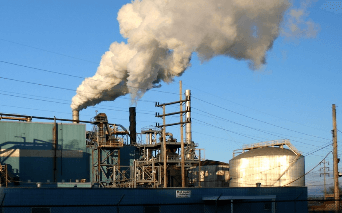The paradox of environment and Energy
New Delhi is world’s most polluted city with extremely high PM 2.5 (particulate matter with size less than 2.5 capable of entering the lungs) content at 220. The permissible and international standard is 150, beyond which is threat to habitations. Beyond 300 is extremely dangerous. The reason to the Delhi’s smog (smoke and fog) in the winter season is because of the increased pollution. The growing middle class and its aspiration to greater energy access and private vehicles are among the chief sources of air pollution.
What are the effects?
Several respiratory disorders such as breathlessness, asthma, wheezing, chest pain and chronic bronchitis are caused due to increased air pollution. The increased vehicular emission are the major sources of carbon monoxide, carbon dioxide and smog are increasing the green house gases and thereby contributing to the global warming.
Government measures in this regard
In India the central pollution control board (CPCB) has been the executing agency of the nationwide programme for ambient air quality monitoring known as National Air Quality Monitoring Programme (NAQMP). It determines the status and trends of ambient air quality, identify the non-compliant to national air quality standards (NAAQS), identify non-attainment cities and undertake the corrective and preventive measures. India’s effort through the National action plan for climate change (NAPCC) to prevent the green house gas emission is one such measure in this regard. GOI recently mooted to implement Environment Protection Agency’s International air quality forecasting system AirNow. It would be in line to reducing the green house gases and working for the replacement of carbon.
Major sources of carbon footprint
In an energy starved country like India, it is challenging task to reduce the carbon footprint drastically of which the major source is the coal-based thermal power plant. Hence the country faces the dual challenges to reduce the carbon footprint and providing access to electricity to its entire citizen. Around 32.8% of Indian population is deprived of access to electricity according to 2011 census. These families are dependent on the biomass, wood, charcoal and straw to meet the energy need and produce the adverse impact on the environment.
Alternatives to the thermal power plant
NAPCC (national action plan for climate change) targeted to hybrid 15% of renewable energy into the national grid by 2020. It aimed to increase the share from 2% in 2001 to 15% by increasing 1% annually to our renewable grid. At present renewable energy in India contributes 12.3% of the total electricity generated of which 70% is the wind energy. India attained a 2GW of solar capacity is now aiming towards 100 GW by 2022.
Other renewable energy application and technology
The improved solar space heating and cooling device, the biomass cook stoves, solar pasteurizers, solar desalinator, photovoltaic water pump are such other renewable energy option using solar energy. This is wholly a sustainable way to protect environment. Since the technologies to these renewable resources are not economic and hence not very handy to use for the larger mass.
Optimizing the clean energy option through the development of nuclear plant and simultaneously funding the innovative technologies to develop the citizen friendly renewable resources. Developing renewable mini-grid to the far-off rural areas. Developing fuel efficient vehicles, more awareness for the use of public transport, implementation of Bharat stage IV (sulphur 50ppm) are such other measures need to be taken by the government in order to take hold of the increasing pollution.


